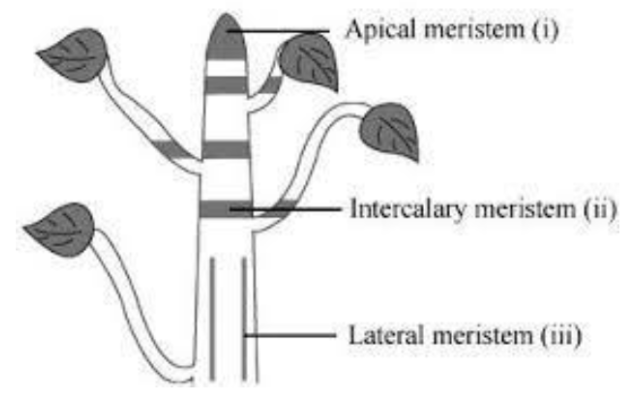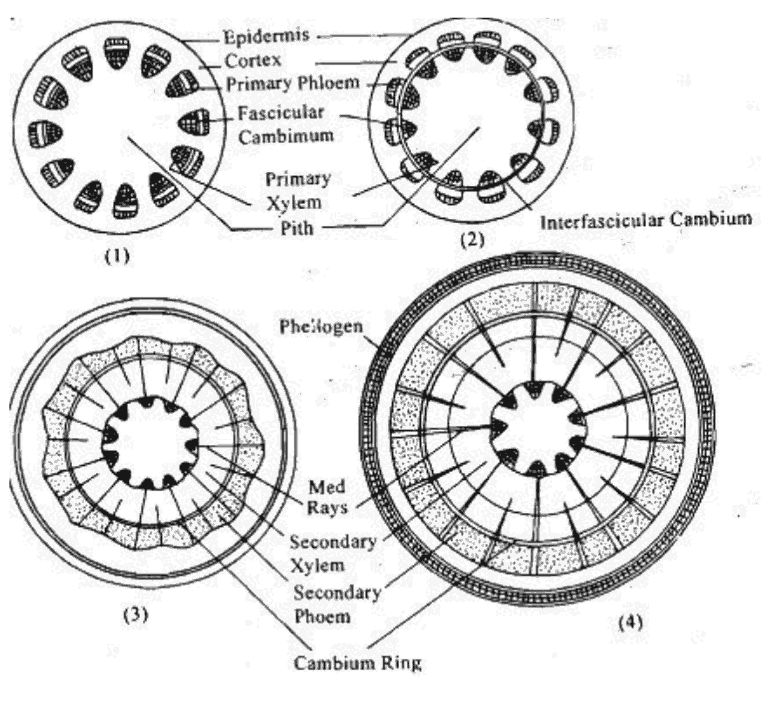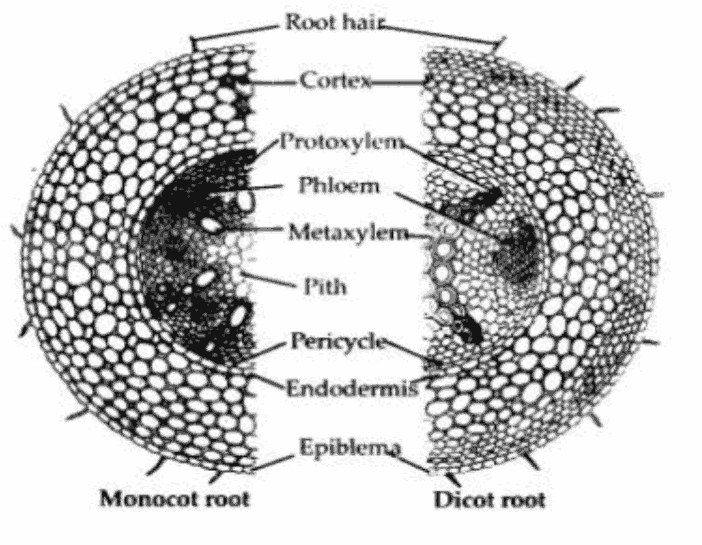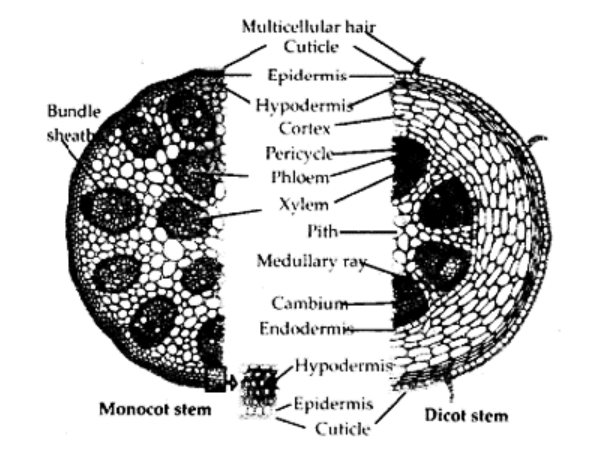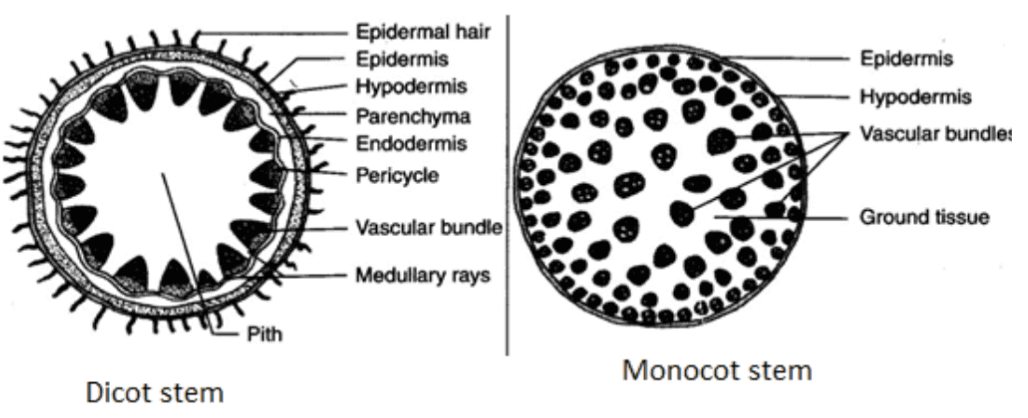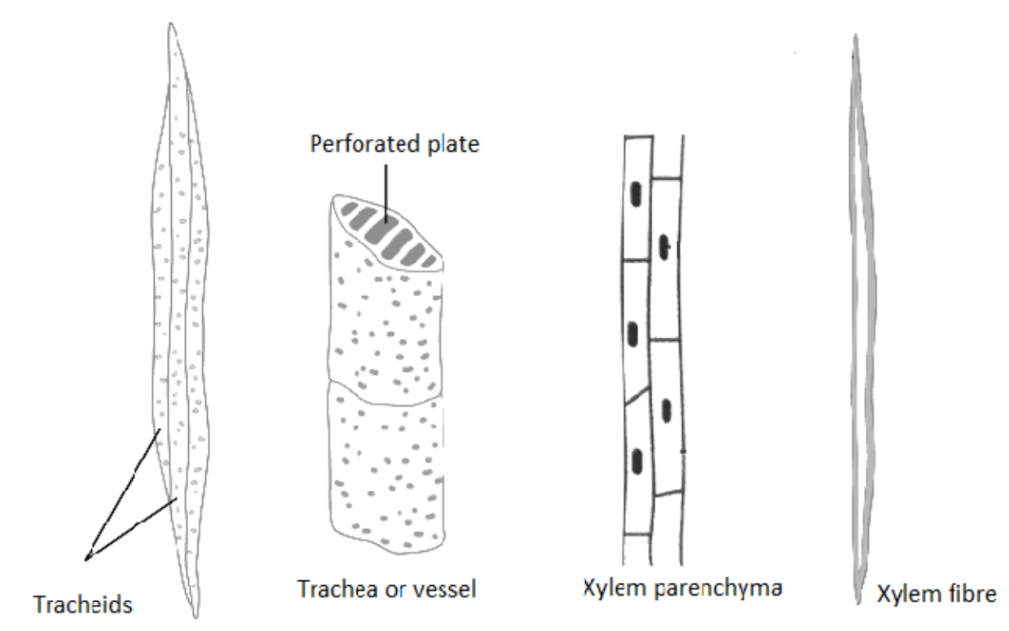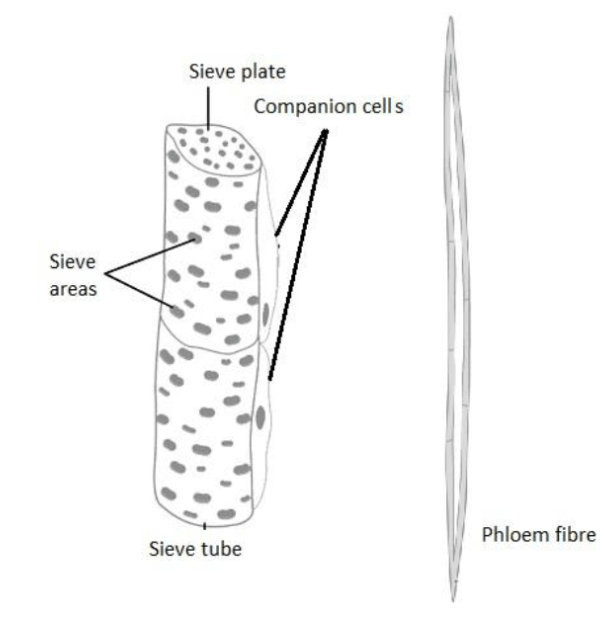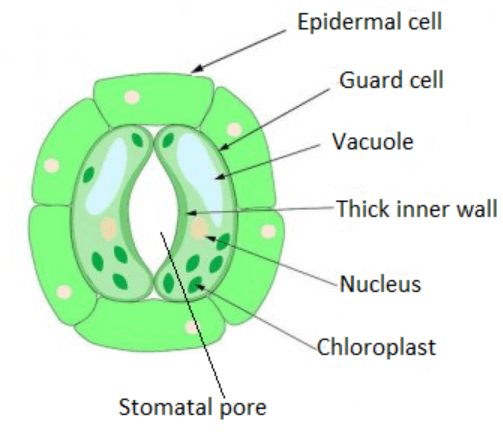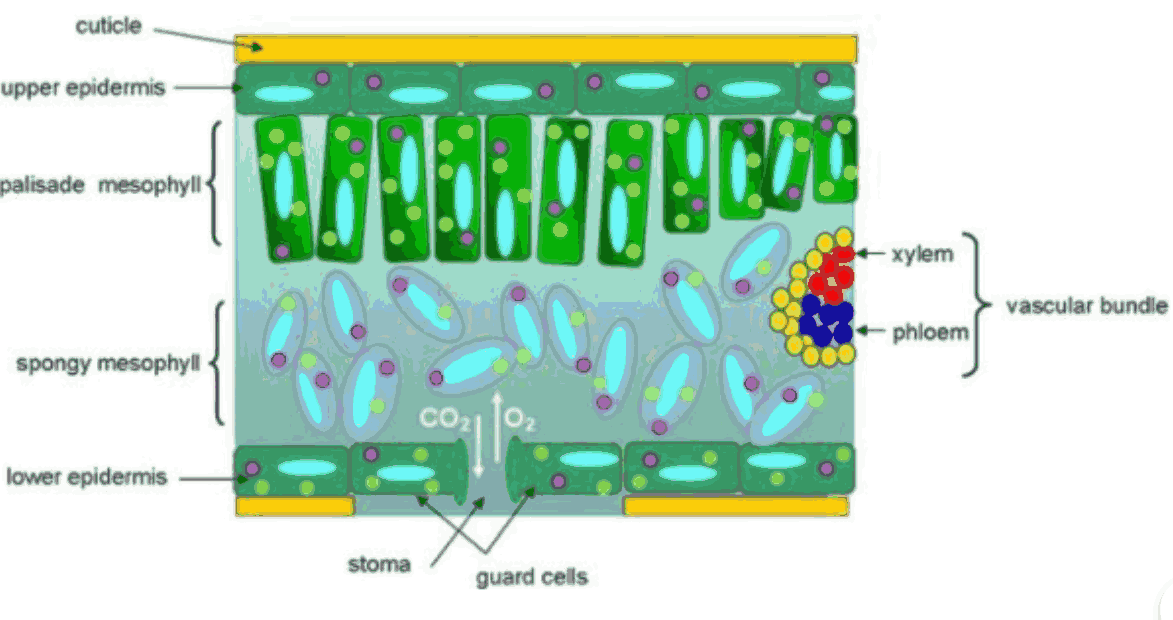NCERT Class 11 Biology Chapter 6: Complete Resource for Anatomy of Flowering Plants
FAQs on NCERT Solutions for Class 11 Biology Chapter 6 Anatomy of Flowering Plants
1. Explain the location as well as the function of the meristems.
Meristems are basically of three types, and they are classified based on location in the plant's body. The three types are Apical meristem, Intercalary meristem, and Lateral meristem. The apical meristem is located at the root and shoots apices and leads to an increase in the length of the plant. The intercalary meristem is located at the leaves' bases right above or below the nodes and leads to the organ's elongation. The lateral meristem is located on the lateral side of the plant.
2. Why are phloem as well as xylem known as complex tissues?
Compex tissues are diverse types of cells that perform a common function. Xylem and phloem are examples of complex tissues because all the cells that are functioning as a common unit for a said common function possess different structural organizations. At the same time, Xylem has four types of cell, namely vessels, tracheids, xylem fibres, and xylem parenchyma. Phloem has companion cells, phloem fibres, sieve tube elements, and phloem parenchyma.
3. Which concepts will a student learn in Chapter 6 of Class 11 Biology?
Chapter 6 of Class 11 Biology is “Anatomy Of Flowering Plants”. The theories included in the chapter are:
Introduction
The Tissues
Meristematic Tissues
Permanent Tissues
Simple Tissues
Complex Tissues
The Tissue System:
Epidermal Tissue System
The Ground Tissue System
The Vascular Tissue System
Anatomy of Dicotyledonous and Monocotyledonous Plants:
Dicotyledonous Root
Monocotyledonous Root
Dicotyledonous Stem
Monocotyledonous Stem
Dorsiventral (Dicotyledonous) Leaf
Isobilateral (Monocotyledonous) Leaf
Secondary Growth:
Vascular Cambium
Formation of cambial ring
Activity of the cambial ring
Springwood and autumn wood
Heartwood and Sapwood.
Cork Cambium
Secondary Growth in Roots
Summary
Complete solutions of the chapter are available free of cost on Vedantu.
4. Define the epidermal tissue system.
The description of the epidermal tissue system is mentioned below:
This system includes the outer covering of the plants. For example, stomata, cuticle, trichomes, etc in root hairs and stem.
Through the process of transpiration, stomata regulate water loss and gaseous exchange.
The shape of guard cells are bean-shaped. These cells contain chloroplasts.
In grasses, the shape of guard cells is dumb-bell.
The root hairs of the plants are unicellular.
The trichomes are multicellular.
5. What do you understand about the vascular tissue system?
Beneath are the points which will help you to understand the topic “The Vascular Tissue System”:
The complex tissues of phloem and xylem are included in this tissue system.
The dicots include cambium which is located between the vascular bundle of the xylem and phloem.
Secondary tissues are formed by cambium.
Open vascular bundles are present in dicots.
There is the absence of cambium in monocots.
Vascular bundles are of radial arrangement in the roots.
In leaves and stems, the radius is the same in xylem and phloem.
6. What is the idea behind the topic “Dicotyledonous Leaf”?
The theory behind the topic “Dicotyledonous Leaf” is shared as follows:
Due to the ventral side and distinct dorsal, these leaves are known as dorsiventral leaves.
The dicotyledonous leaf has a reticulate venation.
The lower and the upper surface area is covered by the epidermis.
The abaxial epidermis contains stomata in high amounts.
The process of photosynthesis is performed by mesophyll cells which are parenchymatous.
Round, spongy and elongated palisades are used to make mesophyll cells.
Bundle sheath cells surround the vascular bundles.
7. How to score good marks in Chapter 6 of Class 11 Biology?
It is very easy to get decent marks in Chapter 6 of Class 11 Biology. This can be possible if a student focuses on the chapter. They should use the NCERT book as it is recommended by the CBSE. The book helps in clearing all the concepts. Students will grasp the topics easily if they solve the NCERT Solutions. Download the PDF file of the NCERT Solutions from the Vedantu website or the app. Learn the diagrams by practising them. Have a habit of writing so that you can write the answers in the proper format.
























